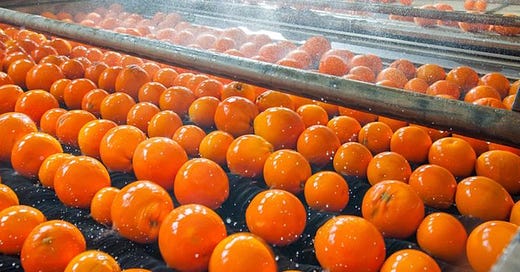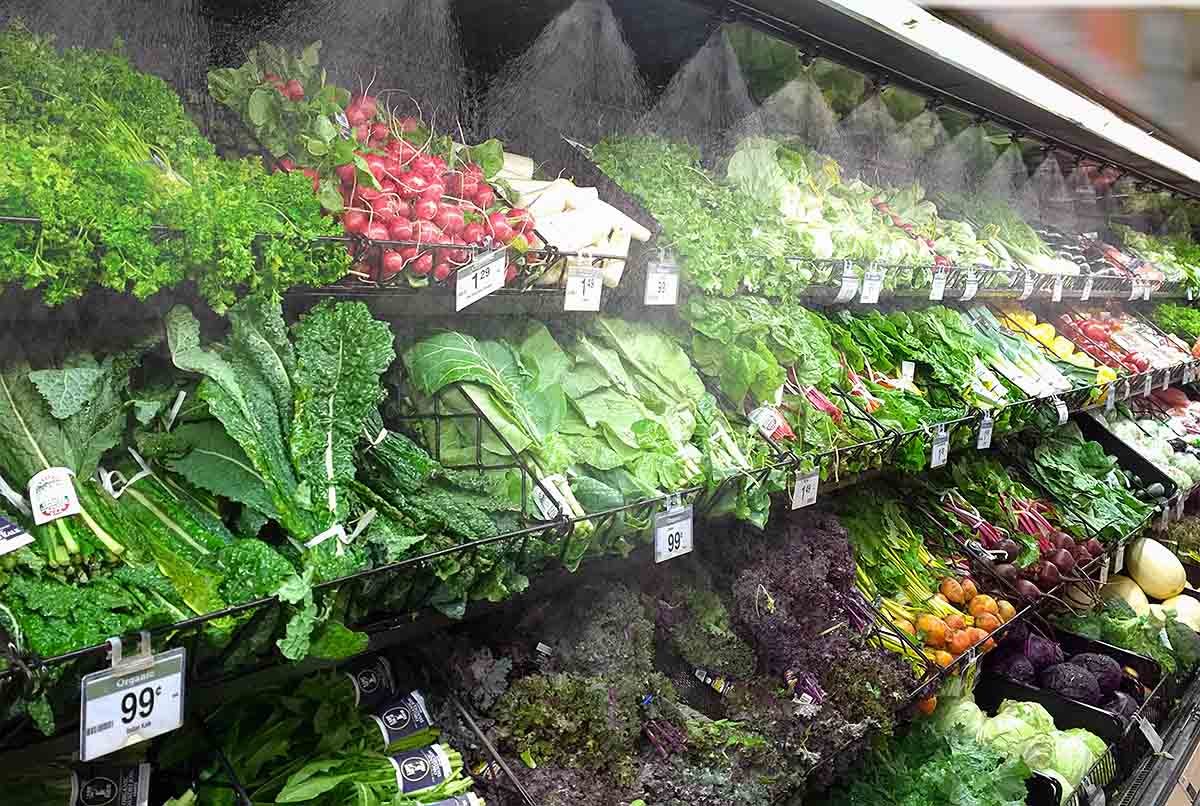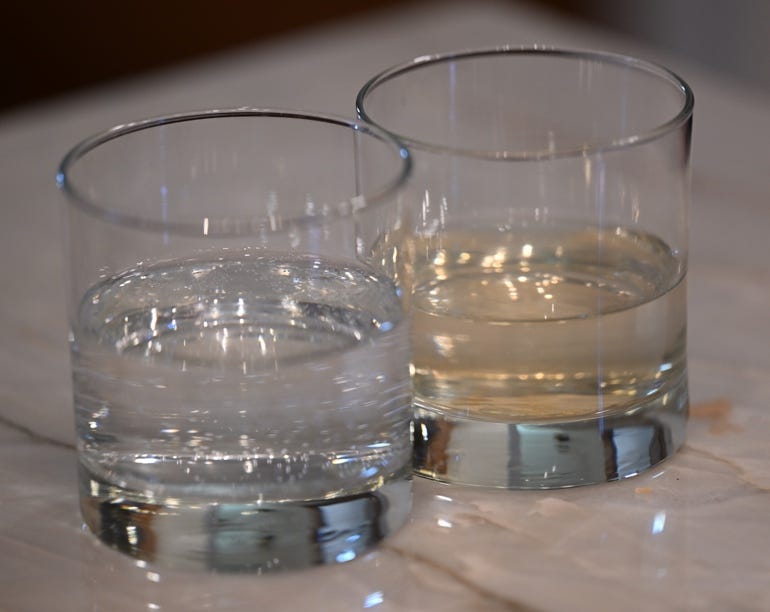“Water, water, everywhere,
And all the boards did shrink;
Water, water, everywhere,
Nor any drop to drink.”
Samuel Taylor Coleridge, “The Rime of the Ancient Mariner”
The human body can survive for a considerable period of time without food, much less time without water. Water comprises, on average, about 60 percent of our body weight. It can vary from 45 percent to 75 percent as a function of age, sex, body size, physical condition, balance between fat and muscle, and hydration level. The majority of the water in the body is inside the cells, most of the remainder surrounding the cells. The brain and the kidneys contain the most water of all of the organs of the body; water makes up 80 to 85 percent of their weight. Water is necessary for the body to properly function. C. Sissons, “What is the average percentage of water in the human body?” Medical News Today(May 27, 2020). https://www.medicalnewstoday.com/articles/what-percentage-of-the-human-body-is-water
As you have undoubtedly experienced, recommendations for the amount of water you should drink per day vary, often considerably. The most commonly heard recommendation is 8 cups of water per day, which is considered a reasonable target by most medical commentators. The amount of water you need depends upon many factors, including your overall health, how much you exercise, and the weather. A reasonable guideline for adequate hydration is you rarely feel thirsty and your urine is colorless or pale yellow.
Compare the eight-cup-recommendation with The U.S. National Academies of Sciences, Engineering, and Medicine determination that an adequate daily fluid intake is about 3.7 liters of fluids per day for men (15.5 cups), and about 2.7 liters for women (11.5 cups), in a temperate climate. Note the National Academies recommendation is “total liquids,” not just water; considerably more than traditionally espoused, almost double. Institute of Medicine, Dietary Reference Intakes for Water, Potassium, Sodium, Chloride, and Sulfate (Washington, DC: The National Academies Press, 2005). https://doi.org/10.17226/10925 https://www.nationalacademies.org/news/2004/02/report-sets-dietary-intake-levels-for-water-salt-and-potassium-to-maintain-health-and-reduce-chronic-disease-risk Where does the rest of the “total liquids” come from; obviously, from what you eat.
Water necessarily pervades our food supply system. Let’s start at the beginning; plants need water to grow. When our house plants need water, we go to the tap, get some water, and pour it on them. If we have a garden, whether we spray or use a drip irrigation system, we use our household water source; municipal water, well water, captured rain water. We don’t give a lot of thought to the condition of that water; for the most part it’s potable.
What about the water sprayed on plants in commercial agriculture? That water is not only for plant uptake whether by surface absorption or through its roots, but is also used to apply pesticides and fertilizers. Water that is used for irrigation needs to meet minimum safety standards. A major concern is water-borne enteric pathogens such as E. coli and Salmonella that can survive on a plant’s surface, in the soil, and enter the plant tissue.
A specific strain of E. coli, the O157:H7 strain, that can cause enterohemorrhagic diarrhea, has been studied extensively. It has been demonstrated that this E. coli strain can survive on the surface of lettuce plants for up to 30 days, as well as up to 90 days in soil even under the harshest conditions. Ibekwe, A., C. Grieve, and C. Yang, “Survival of Escherichia coli O157:H7 in soil and on lettuce after soil fumigation,” Can. J. Microbiol. 53(5):623-35 (May 2007). https://doi.org/10.1139/W07-003; Ibekwe, A., C. Grieve, S. Papiernik, and C. Yang, “Persistence of Escherichia coli O157:H7 on the rhizosphere and phyllosphere of lettuce,” Lett. Appl. Microbiol. 49(6):784-90 (December 2009). https://doi.org/10.1111/j.1472-765X.2009.02745.x
We live under the assumption that growers take appropriate food safety measures, and specific measures with respect to water safety. As consumers we have little or no knowledge about agriculture growing conditions, as well as no control over grower practices; we purchase relying on all of the players in the food chain. Unfortunately, there are outbreaks in which the food safety system has broken down. There was an E. coli outbreak in November to December 2021 linked to packaged salads (across 4 states, 4 hospitalizations, 1 death) and another in October 2021 linked to baby spinach (across 10 states, 4 hospitalizations, no deaths). https://www.cdc.gov/ecoli/2021/o157h7-11-21/index.html
Irrigation water is also used to apply pesticides and fertilizers to plants. Most commonly used pesticides and fertilizers are water soluble so they can be borne by the irrigation water and absorbed by the plants. The term “pesticides” includes herbicides for weeds, insecticides for insects, fungicides for fungi, nematocides for nematodes, and rodenticides as vertebrate poisons. The higher the solubility, the higher the risk of leaching from the soil into ground and surface waters via runoff. “Agriculture is the leading source of impairments in the Nation’s rivers and lakes. About a half million tons of pesticides, 12 million tons of nitrogen, and 4 million tons of phosphorus fertilizer are applied annually to crops in the continental United States.” Water Resources Mission Area, “Agricultural Contaminants,” U.S. Geological Survey (March 1, 2019). https://www.usgs.gov/mission-areas/water-resources/science/agricultural-contaminants
Obviously, pesticides are potentially toxic to humans and can have both short term and chronic health effects, depending upon exposure levels and personal susceptibility. Water comes into play again. Most of us simply wash fruits and vegetables under running cold water, which works well for some pesticides. Some people use commercial produce cleaners; unfortunately, these products are no more effective than running water. It turns out your grandmother’s techniques of using either salt water or a vinegar-water solution is effective in removing a large percentage of pesticides from produce (a 10 percent salt water solution or a 10 percent vinegar-water solution). Zhang, Z., X. Liu, and X. Hong, “Effects of home preparation on pesticide residues in cabbage,” Food Control 18:12, 1484-87 (December 2007). https://doi.org/10.1016/j.foodcont.2006.11.002 Also, a very weak baking soda solution was found to be most effective at removing pesticide residues from the surface of apples after a 12-15 minute soak. Yang, T., et al., “Effectiveness of Commercial and Homemade Washing Agents in Removing Pesticide Residues on and in Apples,” J. Agri. & Food Chem.65:44, 9744-52 (2017). https://doi.org/10.1021/acs.jafc.7b03118
Regardless of water-based washing method, can we remove all of the pesticides from fruits and vegetables that have been sprayed with them? The Environmental Working Group (EWG) annually issues its Shopper’s Guide to Pesticides in Produce that ranks the pesticide contamination of 46 popular fruits and vegetables. The results are tabulated onto two popular lists, the “Dirty Dozen” and the “Clean Fifteen.” EWG recently released its “tests of 765 non-organic blueberry samples collected in 2020 and 2021 [and] found more than 90 percent had pesticide residues, up from 81 percent with detectable residues in 2014. There were other worrying findings: just under 80 percent of samples had two or more pesticides, compared to 70 percent in 2014, [and] a sample of blueberries had up to 17 different pesticide residues, compared to 13 in 2014. The most troubling pesticides are phosmet and malathion, chemicals known as organophosphate insecticides. They kill many types of insects and are toxic to the human nervous system, especially children’s developing brains. Phosmet was detected on more than 10 percent of blueberry sample, with malathion close behind at 9 percent. Phosmet is not approved for use in the European Union, and malathion is approved there for use in greenhouses only. Yet the Environmental Protection Agency currently allows both for use on U.S. crops, putting blueberry fans at potential risk. https://www.ewg.org/foodnews/blueberries.php?utm_source=newsletter&utm_campaign=202303FoodNewsLaunch&utm_medium=email&utm_content=pesticides&emci=bd660939-56c6-ed11-a8e0-00224832e811&emdi=520e233f-56c6-ed11-a8e0-00224832e811&ceid=3132692 (March 19, 2023). Most research shows that washing with water removes some, but not all, phosmet and malathion. How much risk are you willing to accept? Obviously, the best way to avoid pesticides is to buy only organic fruits and vegetables.
The U.S. Department of Agriculture (USDA) National Organic Program (NOP) rules and regulations for the production, handling, labeling, and enforcement of all USDA organic products do not include any specific provisions for the water used in organic food production. Farmers must maintain or improve soil and water quality, but there are no explicit standards or measures.
The crops are grown, harvested, and now have to be processed for their travels to consumers. The first step is washing raw fruits and vegetables, followed by numerous other operations as a function of the final destination of the crop. Water is used to move crops throughout the processing plant, fluming, as well as sorting. Additional processes such as peeling, pitting, blanching, coring, slicing, and dicing, use more water. Water is also used to cool and heat crops during processing, as well as during storage. HACCP (Hazard Analysis Critical Control Point) is defined as a management system in which food safety is addressed through the analysis and control of biological, chemical, and physical hazards from raw material production, procurement and handling, to manufacturing, distribution and consumption of the finished product. The U.S. Food and Drug Administration (FDA) publishes principles and applications guidelines for enumerated industries. https://www.fda.gov/food/hazard-analysis-critical-control-point-haccp/haccp-principles-application-guidelines Potable, drinking, water standards are applicable to food handling and processing. The U.S. Environmental Protection Agency (EPA) has drinking water regulations for more than 90 contaminants pursuant to the Safe Drinking Water Act (SDWA). https://www.epa.gov/sdwa; https://www.epa.gov/dwreginfo/drinking-water-regulations European Union standards are higher than those in the U.S. or Canada.
The grocery store is for the most part an extension of the food processing system. We have all been sprayed with water while reaching for lettuce or other produce in the market. Here too potable water standards apply.
You’ve made it home with your fresh fruits and vegetables. Some of the water used to get your produce to you has been visible, most not. Now what? As we again wash our fruits and vegetables, we use potable water from the tap. Unfortunately, sometimes the tap water is not enticing.
One day we ran our tap water into a clear glass to find a surprise; it was “dirty brown.” The tap water did not have an appreciable smell, and undoubtedly met drinking water standards, however unappetizing to sight. Whatever the contaminants, they could potentially be transferred to the fruits and vegetables. Furthermore, if used to cook pasta the contaminants could be absorbed into the pasta, or absorbed into boiled potatoes. Fortunately, we have an installed water filtration system that we use for cooking water and drinking water.
Water has a taste; not all water tastes the same. Its taste is subjective, each person can react differently. Our reaction is influenced by our own body chemistry and the source of the water, both in terms of drinking the water itself as well as how it affects food we prepare. We visited a lounge at the airport while waiting for our flight to depart. I got a glass of water; one sip and no more. As far as I was concerned, the water was undrinkable. However, others in the lounge were drinking unfettered … what gives?
Humans have taste receptor cells (TRCs) that can differentiate five major “tastes;” bitter, sweet, sour, salty, and umami, often described as “savory.” Each of these qualities cause TRCs to be activated in different parts of the brain; water activates acid-sensing TRCs for a “sour” reaction. As humans evolved they had to have a way to know whether food was bad or poisonous; most toxins are bitter to the taste. Water that has an unusual taste may contain contaminants … don’t drink it. Zocchi, D., G. Wennemuth, and Y., “The cellular mechanism for water detection in the mammalian taste system,” Nat. Neurosci. 20, 927–933 (2017). https://doi.org/10.1038/nn.4575; Meyer-Gerspach, A., et al., “Gut Taste Stimulants Alter Brain Activity in Areas Related to Working Memory: a Pilot Study,” Neurosignals 24:59-70 (2016). https://doi.org/10.1159/000442612
The most important factor in how water tastes is the minerals that are dissolved in the water. The measure is “parts per million” (PPM), which can be hard to fathom. To put PPM in context, it is about 32 seconds out of a year or 1 millimeter of error in a kilometer of distance. Amazing how something seemingly so small can have such an impact on taste.
What are the common minerals to which we react? Calcium makes water taste milky and smooth, magnesium can be bitter, and sodium makes it taste salty. Chlorine makes it smell like a swimming pool (it also interferes with the yeast in your bread baking). A highly metallic taste can mean high levels of iron in the water; manganese similarly. While not harmful in itself, high iron concentrations can sometimes indicate the presence of lead, which is toxic. A medicinal taste can indicate undesirable disinfecting agents. Whelton, A., et al., “Minerals in drinking water: impacts on taste and importance to consumer health,” Water Sci. Technol. 55(5):283-91 (2007). https://doi.org/10.2166/wst.2007.190.
We need to drink water, but what should we drink? Tap water, filtered water, bottled water? Is the source important? You can find innumerable reviews and surveys on the Web that evaluate bottled water. How many have you tasted? How many have you used in cooking?
Don’t like the idea of all those disposable plastic bottles. On the Web you can find reviews for whole-house water filters, under-the-sink water filters, water filter pitchers, table-top water filtration systems, water filter bottles; the list goes on and on.
Ultimately the question comes down to how does the water we use affect the quality and taste of the food we eat. Clearly, the most important factor is possible contamination of the water we use. Close thereafter is taste; the better the taste of your water, the better your food tastes.










thanks for all of your educational and fascinating research